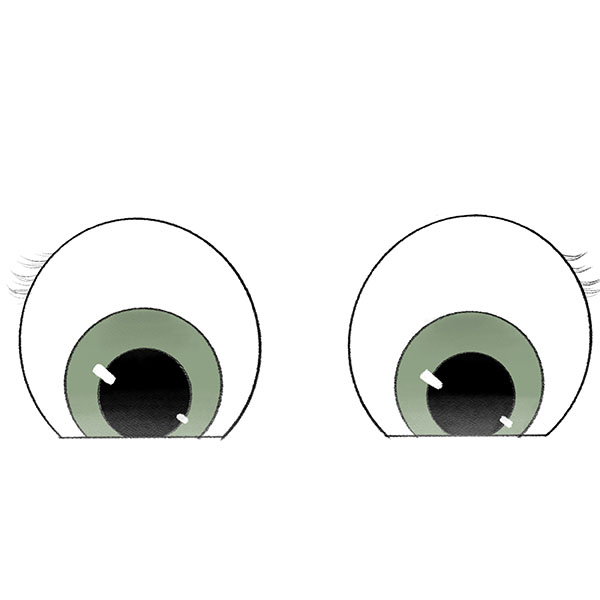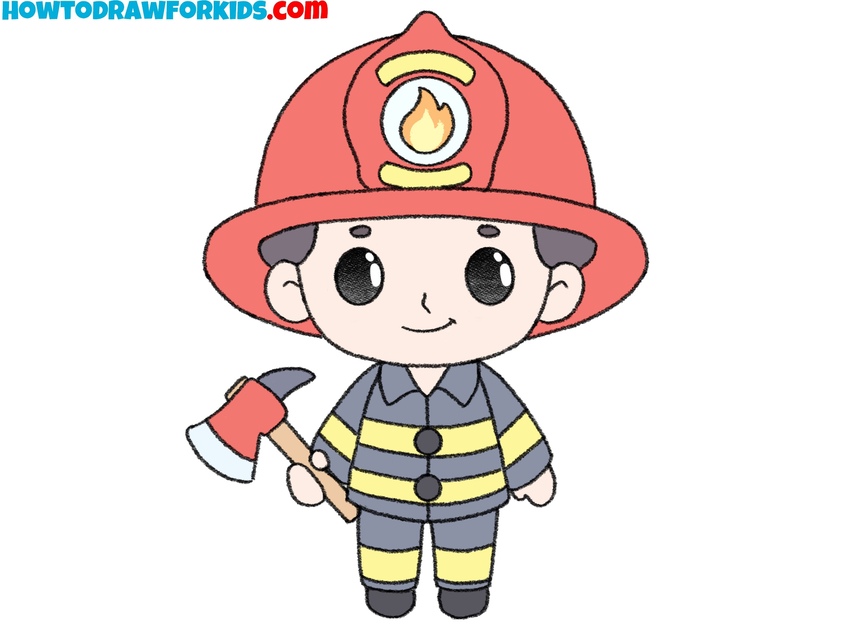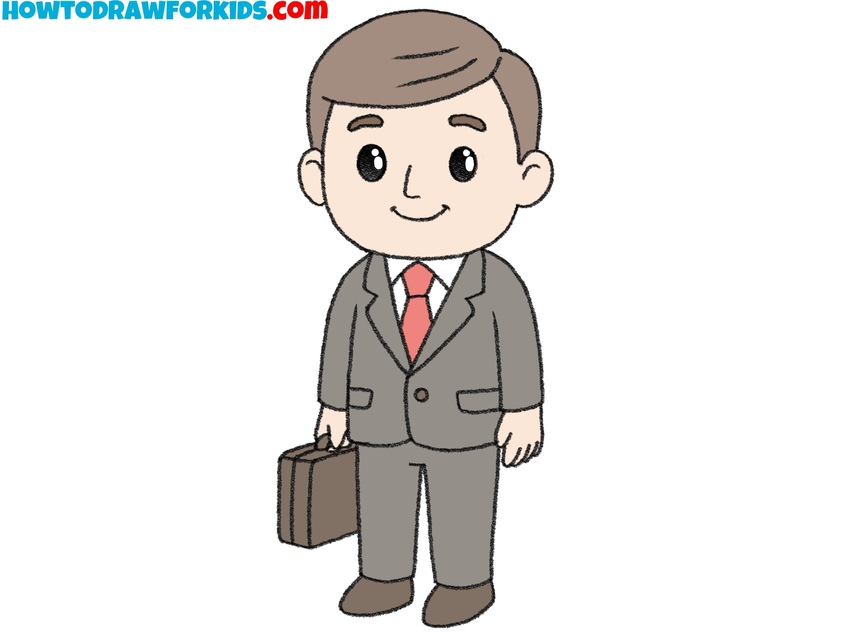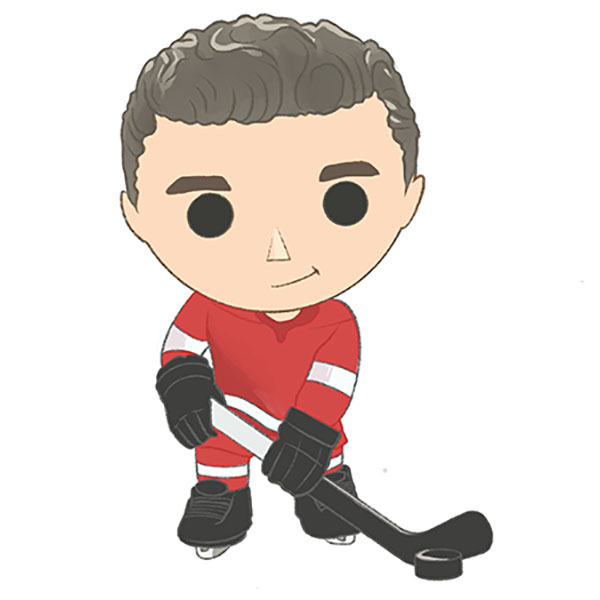How to Draw a Cartoon Face
In this artistic adventure, I’m excited to share with you the essential keys to sketching playful, engaging characters while we learn how to draw a cartoon face. Starting with the basics, we’ll adeptly translate simple lines into a face that’s brimming with vibrant life and character, absolutely perfect for imaginative storytelling.
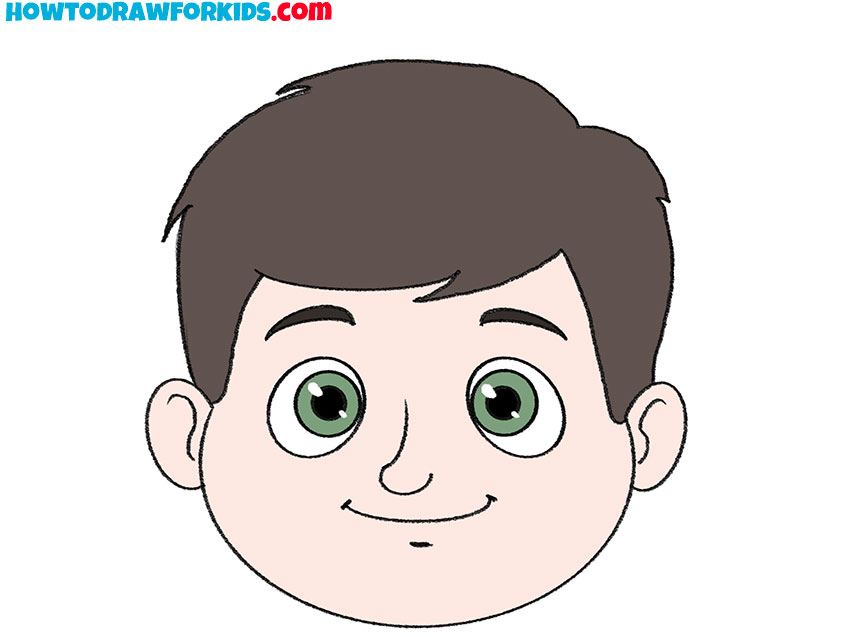

How to Draw a Cartoon Face: Basic Information
The joy of bringing a character to life begins with learning how to draw a cartoon face. My tutorial is crafted to make this process as enjoyable and straightforward as possible. We start with the basic shapes, ensuring anyone can follow along and achieve delightful results, whether you’re a beginner or looking to polish your skills.
The essence of this cartoon face drawing lies in its expressive features – round eyes and a cheerful smile. Each step of the tutorial builds upon the last, from the simple curve of the chin to the placement of the ears, ensuring your character exudes personality and charm. It’s about capturing emotion in a fun, accessible way.
By the end of our session, as you draw a cartoon face, you’ll see how a few simple lines and curves come together to create an expressive and endearing character. This lesson isn’t just about drawing; it’s about finding the whimsy and joy in creating something that can make both you and your viewers smile.
Cartoon Face Drawing Tutorial
Materials
- Pencil
- Paper
- Eraser
- Coloring supplies
Time needed: 30 minutes
How to Draw a Cartoon Face
- Draw the bottom outline of the face.
Depict a smooth rounded line. The lower part of the face is wide.
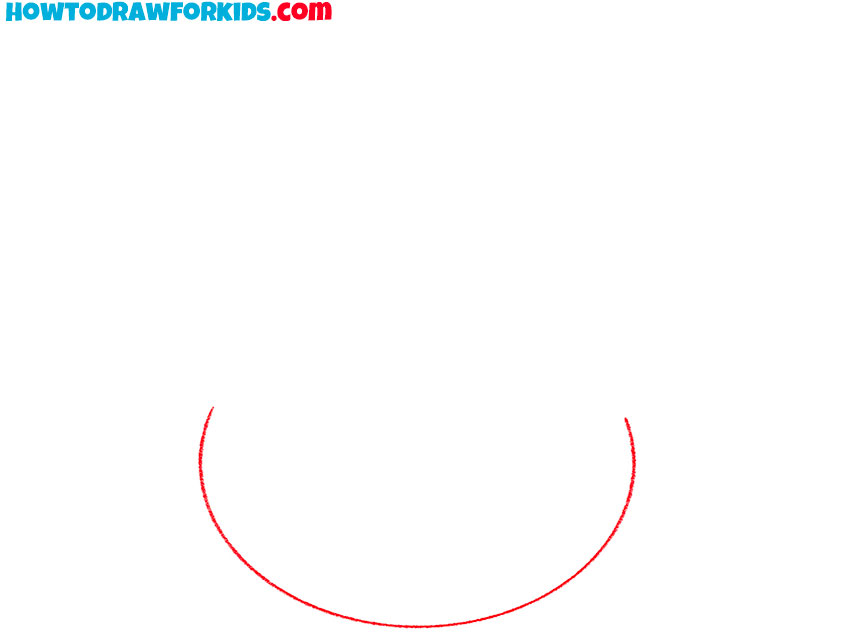
- Sketch out the eyes.
Depict two even ovals of the same size.
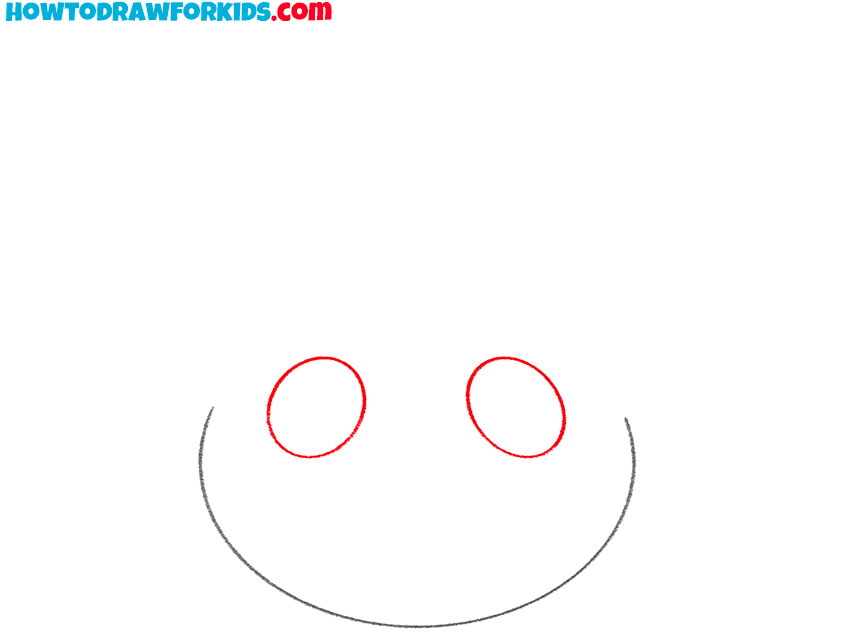
- Add the iris and nose.
Inside each eye, draw a circle and use a curved line to draw the small nose.

- Sketch out the eyebrows.
Above the eyes depict the eyebrows using short smooth lines.
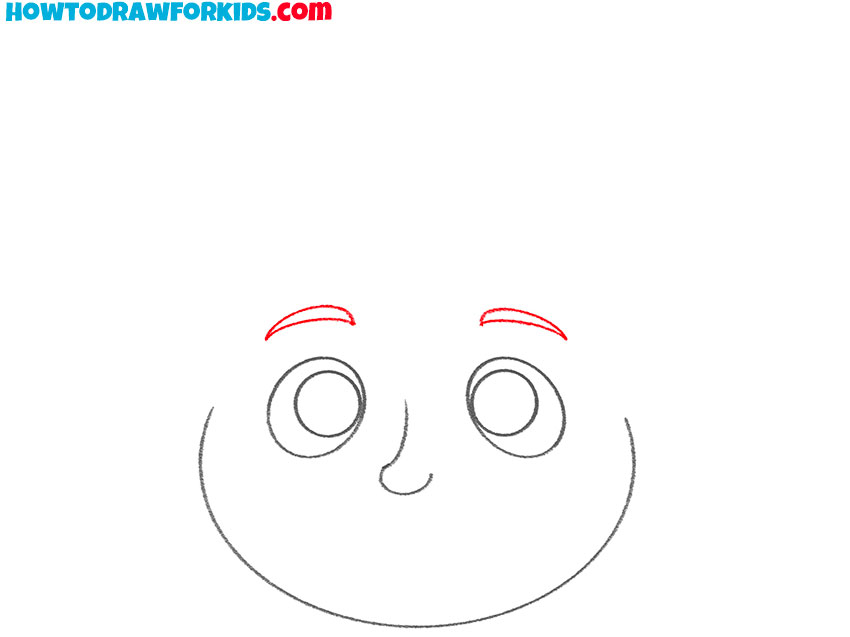
- Draw the mouth.
With the help of a smooth rounded line draw the mouth and add the short crease on the chin.
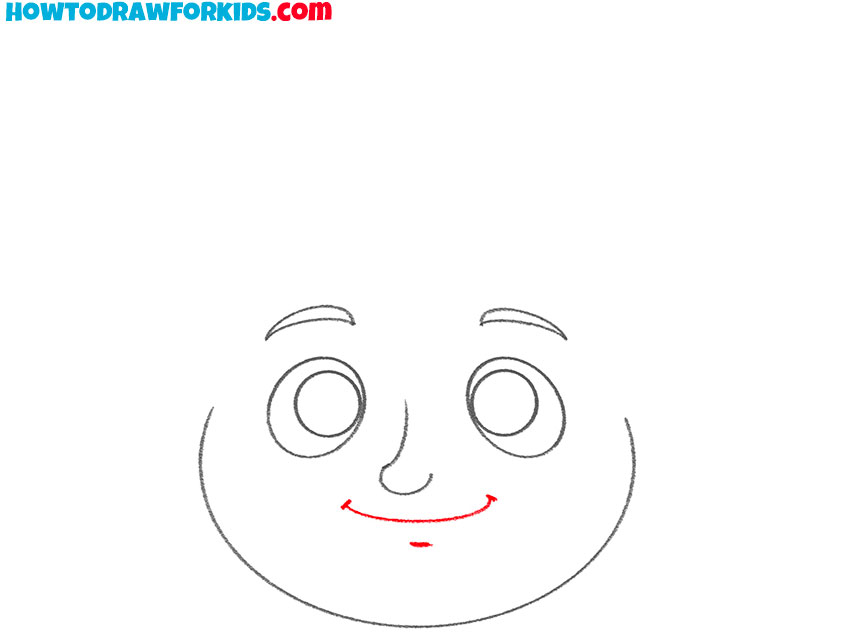
- Depict the ears.
On the sides draw the ears, which have a rounded shape.
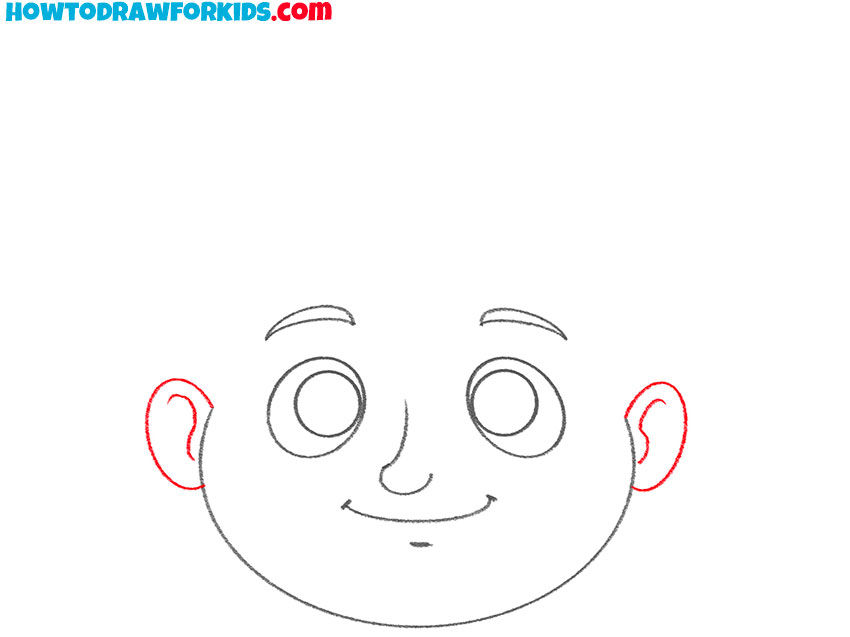
- Draw the hair above the forehead.
Sketch out the hair with several lines of different shapes.
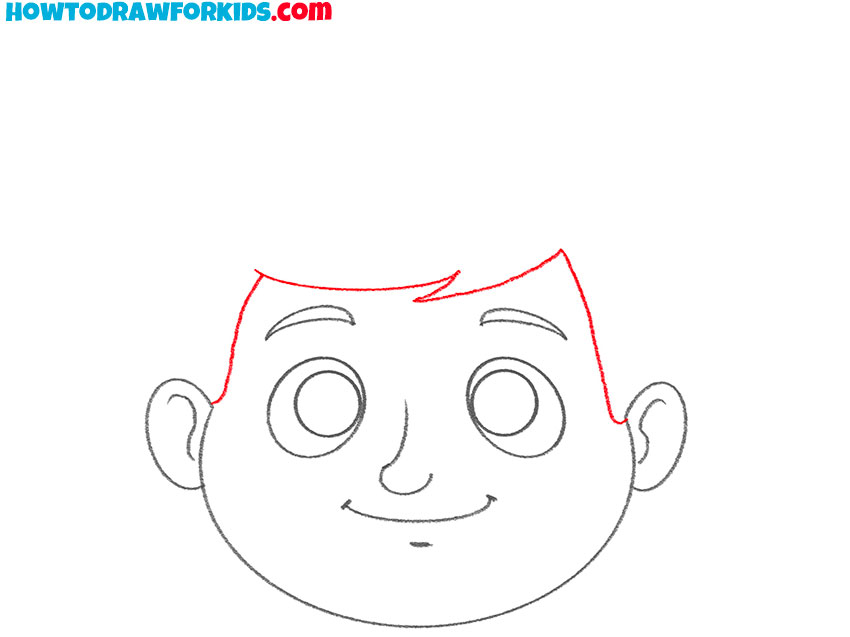
- Add the rest of the hair.
Depict the rest of the hair on the head with smooth lines.
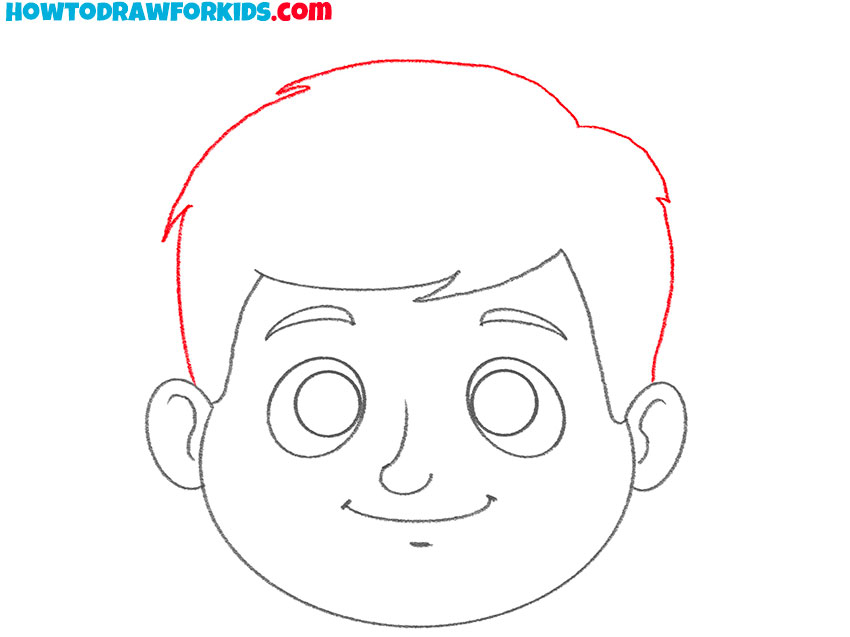
- Color the cartoon face.
Choose any color for the drawing.

Additional Content
In addition to the online tutorial, I’ve crafted a free PDF file that encapsulates the core principles of drawing a cartoon face. This abridged guide is designed for easy download, allowing you to carry the lesson with you and dive into practice sessions without the need for internet access, ensuring constant improvement in your skills.
The PDF is structured to highlight the fundamental steps in a clear, straightforward manner, making it an invaluable tool for quick reviews or on-the-spot practice. It’s especially useful for reinforcing what you’ve learned, allowing the information to truly sink in and become second nature as you develop your artistic abilities.
By providing this resource for free, my aim is to support your artistic journey, making learning as flexible and accessible as possible. With this guide, you can continue to refine your technique and explore the art of cartoon drawing, regardless of your location or access to technology, keeping your creativity flowing uninterrupted.
Alternative Drawing Techniques
Alongside the main tutorial, I’ve also introduced several alternative drawing techniques for cartoon faces, aiming to expand your creative boundaries and improve your artistic skills. These varied approaches encourage you to explore different facial expressions and styles, enhancing your ability to convey a wide range of emotions.
Embracing these alternative methods will not only diversify your drawing repertoire but also deepen your appreciation for the nuances of cartooning. By challenging yourself with these additional techniques, you’ll find new ways to bring your characters to life, making each cartoon face you draw more expressive and memorable.
Cartoon Face: Conveying the Age of the Character
This alternative drawing method adds maturity to our cartoon character, shifting from the wide-eyed innocence of youth to the nuanced expression of adulthood. The lines are drawn with a subtler touch, and the facial features like the eyes and mouth are less exaggerated, more proportionate, and convey a sense of experience.
In this approach, the eyes are narrower with more defined lids, and the eyebrows are rendered with a slight arch, suggesting depth and wisdom. The nose and mouth are also rendered with more detail, moving away from the simplistic curves of a child’s visage to the refined shapes that characterize an adult’s face.
The overall structure of the face is elongated, and the jawline is less rounded, giving our character a distinguished appearance. By adjusting these key features, our cartoon takes on a new level of sophistication, ready to be infused with a backstory that reflects a richer life lived.

How to Draw a Cartoon Face: Drawing in Different Styles
Here, we’re focusing on a different facial archetype for our cartoon character, aiming for a look that’s distinct from the typical bubbly or child-like expressions. Starting with the foundational shapes, we sketch an oval face that transitions smoothly into a more mature jawline, setting a different tone from the outset.
The eyes are smaller and set deeper, with eyelids that suggest a reflective or more serious personality. The nose and mouth follow suit, with less emphasis on size and more on how they fit within the overall structure of the face. This gives the character a sense of wisdom or experience.
Finally, the hair and ears are added with attention to how they frame the face, providing context to the character’s age or style. With this method, each element works together to build a cohesive and unique cartoon face that stands out with its own narrative and presence.
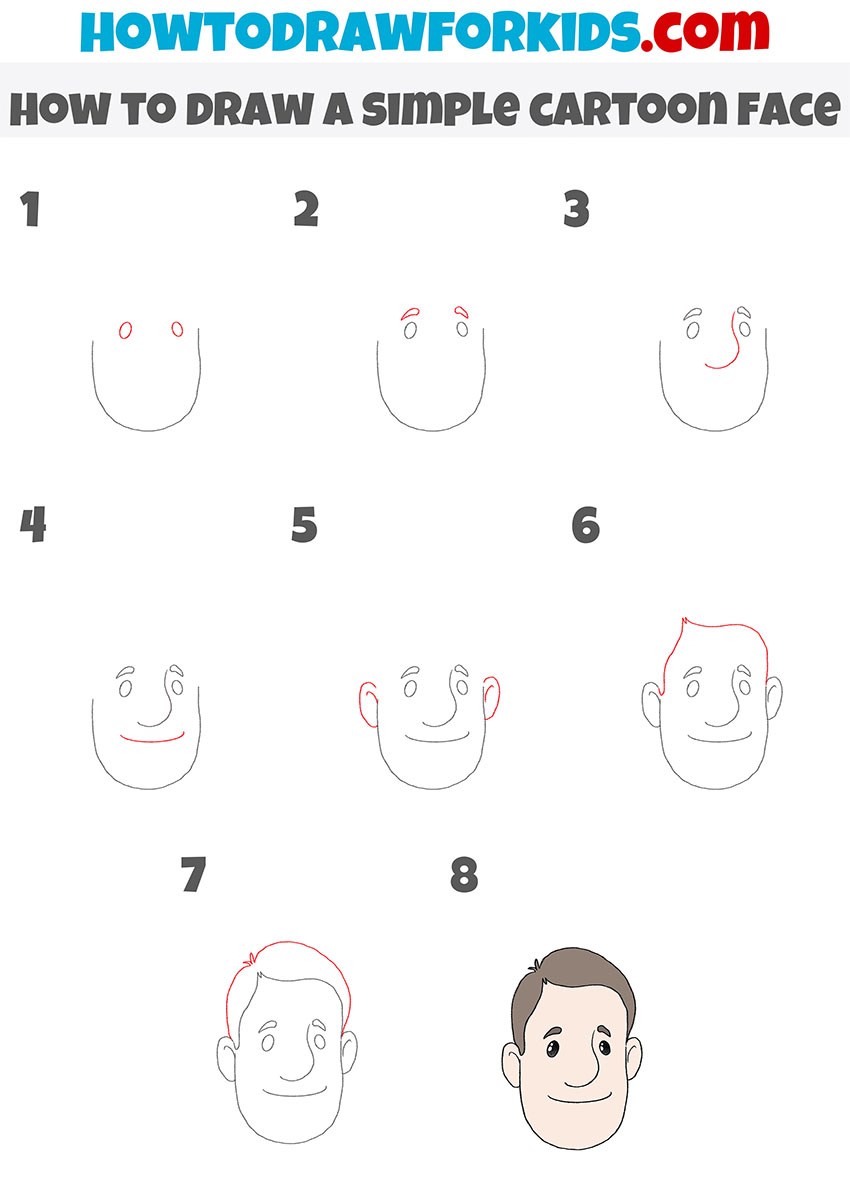
Common Missteps in Drawing Cartoon Faces
Drawing a cartoon face is a journey filled with learning and fun, but it’s easy to slip up along the way. Recognizing common pitfalls is an important step in honing your craft. Here’s a list of frequent mistakes to watch out for, so your cartoon faces can truly come alive without the usual hiccups.
- Disproportionate Features: Making the eyes or mouth too large or too small can unbalance the face.
- Misalignment: Eyes or ears that aren’t level can make the face appear skewed.
- Overcomplicating Lines: Too many lines can age your character or overcomplicate a simple cartoon style.
- Neglecting Expression: The face’s expression is key in cartoons; missing the eyebrows’ angle or the mouth’s curve can weaken the intended emotion.
By avoiding these common mistakes, your cartoon faces will not only improve in quality but also in expression and personality. Keep practicing, mindful of these tips, and soon, crafting cartoon faces that are expressive, proportionate, and lively will become second nature.
Conclusion
With our cartoon faces complete, the adventure doesn’t end here. I encourage you to explore the diverse tutorials on my website, whether you want to capture the chaotic charm of the Joker or the subtle beauty of an insect. Keep updated with the freshest tutorials by following my social media profiles.
And your contributions to our learning path are always welcome, so please share your thoughts and requests for future lessons in the comments section below. Each suggestion brings a new perspective and is a potential spark for our next creative endeavor. Together, we will continue to build a vibrant artistic community.

